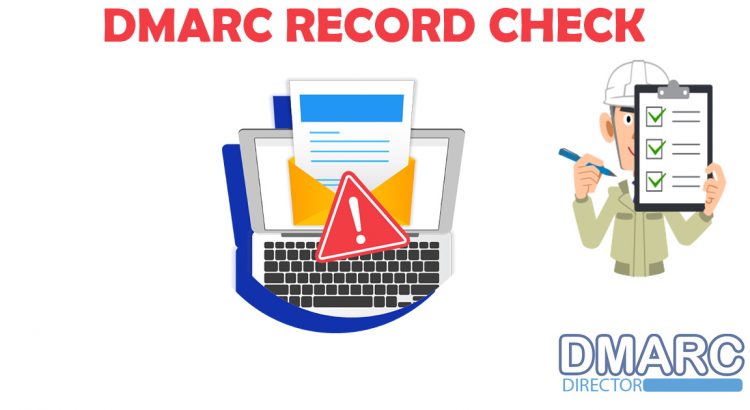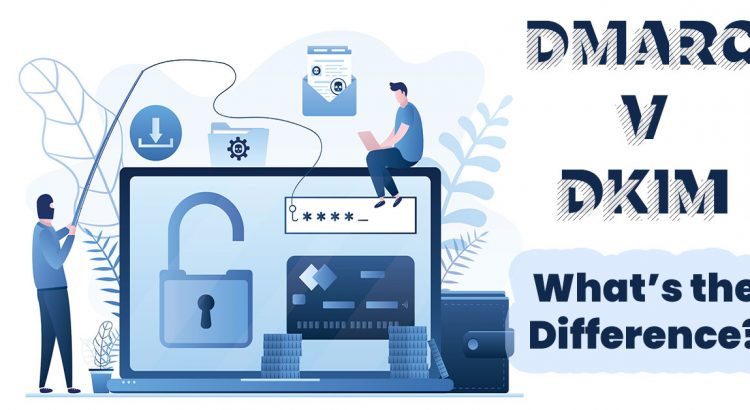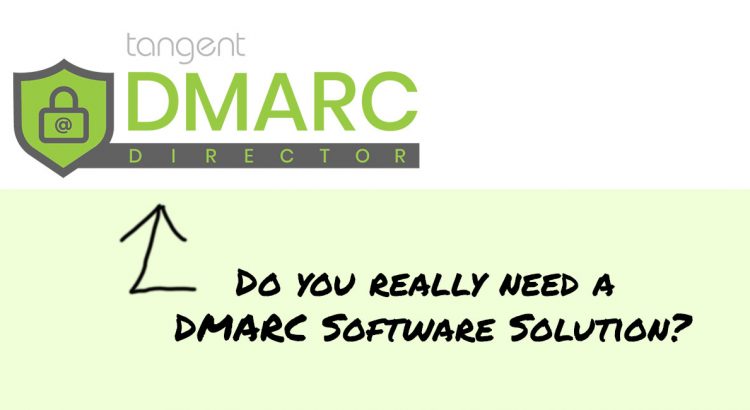In layman’s terms, DMARC prevents email from spoofing and protects email attacks such as phishing and email fraud. To implement DMARC, one would need to set up, monitor and review their DMARC policy. That’s where things can get sticky. Now, unless you’re a programmer, and love looking at code constantly. A Matrix looking screen may […]
Tag: DMARC

DMARC Record: A Powerful Tool to Protect Your Email Domain
Email has become an integral part of our lives, and it’s hard to imagine a world without it. However, with the convenience of email comes the challenge of securing it. Email spoofing and phishing attacks have become more sophisticated and prevalent, putting individuals and organizations at risk of data breaches and other cyber threats. Fortunately, […]

What is the difference between DKIM and DMARC?
As the number of cyber-attacks increases, it is essential to implement robust email authentication protocols to protect sensitive information from being accessed by unauthorized parties. Two such authentication protocols are DKIM (DomainKeys Identified Mail) and DMARC (Domain-based Message Authentication, Reporting, and Conformance). Although both these protocols are used to verify the authenticity of email messages, […]

Security Assessments for Industrial and Pharmaceutical OEMs
DMARC is a security protocol that helps prevent email fraud and phishing attacks by allowing email recipients to verify that incoming messages are from an authorized sender. Enabling DMARC will stop your domain from being spoofed. It stands for Domain-based Message Authentication, Reporting, and Conformance. DMARC also enables senders to receive reports on how their […]

DMARC: How Hackers Exploit Misconfigured DMARC Settings
Email security is a critical concern for businesses and organizations of all sizes. One important tool for protecting against email-based attacks is DMARC. When properly configured, DMARC helps to confirm the authenticity of emails & intercept them from being spoofed or impersonated. However, misconfigured DMARC settings can leave an organization vulnerable to hacking attempts. We’ll […]

Why Do I Need DMARC Configured?
DMARC, or Domain-based Message Authentication, Reporting, and Conformance is a crucial email authentication protocol that helps protect email senders and recipients from spam, phishing, and other types of email fraud. If you’re a business owner or administrator responsible for managing email for your organization, you may have heard of DMARC and wondered why it’s important to have […]

Is DMARC Necessary for Outlook 365?
Outlook 365 is a popular email and productivity platform used by businesses and individuals. While it offers a wide range of features and tools to make managing email and other tasks easier, it is also vulnerable to spam, phishing, and other cyber-attacks. This is where DMARC comes in. DMARC is a security protocol that helps […]
Keep Your Enterprise Safe with DMARC Monitoring
In today’s digital world, email is essential for communication and collaboration in the enterprise. However, with the rise of spam, phishing, and other forms of email fraud, protecting the security and integrity of email communications has become more critical than ever. One of the most effective ways to protect your email communications is by implementing […]
DMARC: Prevent Spoofing and Spam
Did you know that more than 3.1 billion domain spoofing emails are sent per day? And over 25% of these get into Office 365, which has over 60 million commercial users. That means the data of over 15 million people is at risk every day. Let that sink in. Even giants like Facebook, Microsoft, and […]

DMARC: Stop Hackers from Scamming Your Staff
DMARC is a security protocol that helps organizations prevent email-based attacks. It stands for “Domain-based Message Authentication, Reporting, and Conformance,” and it works by verifying the authenticity of email messages and stopping counterfeit notes from reaching their intended recipients. DMARC is essential because it can help organizations stop hackers from impersonating their staff and sending […]
